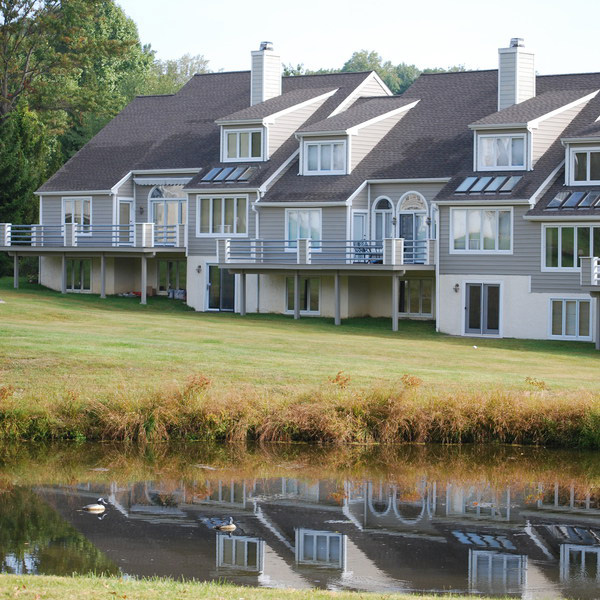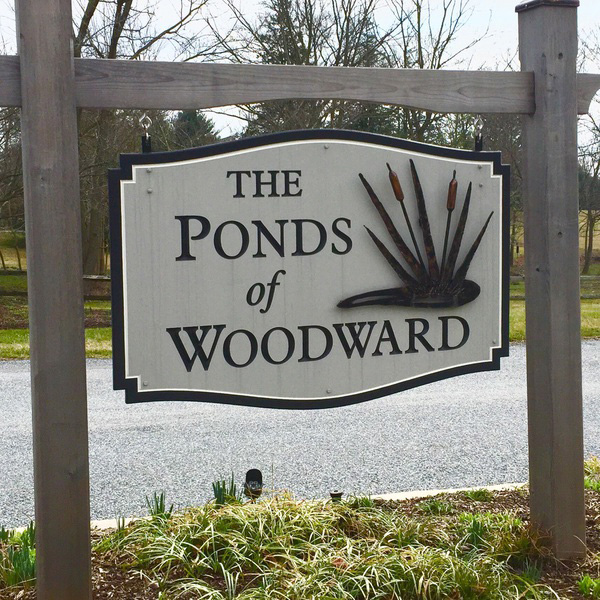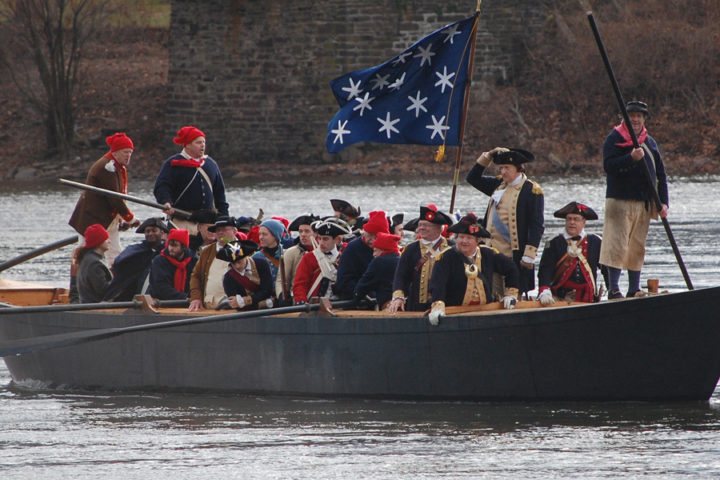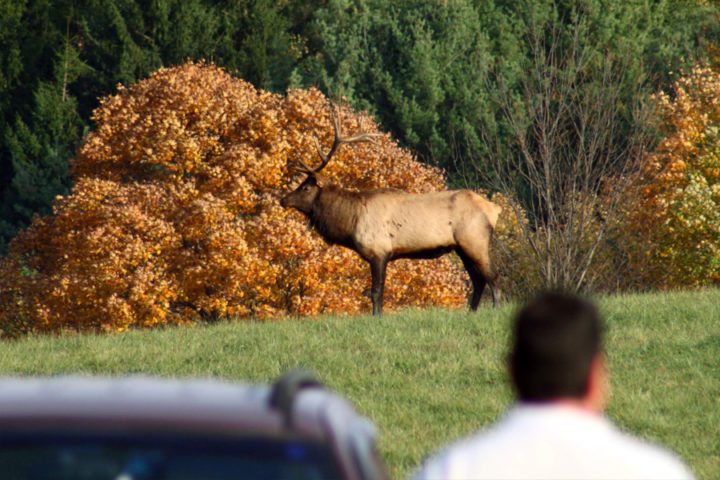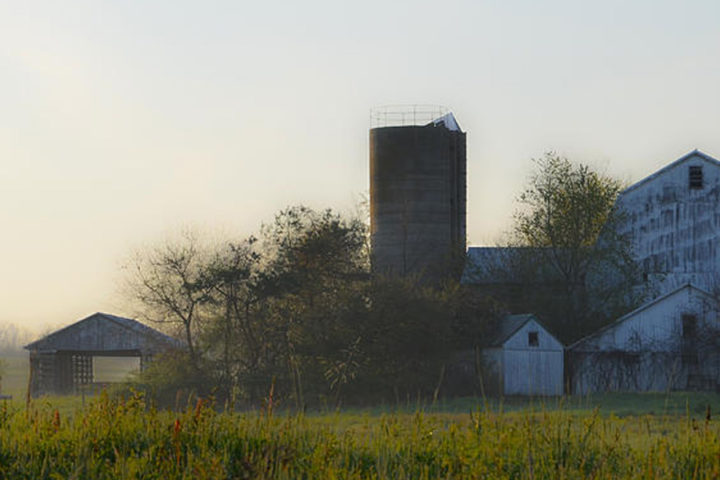When Denise and Greg Bayley sit in their backyard, they are surrounded with quiet and a 50-acre apple orchard. The view from their lawn chairs is row upon row of gnarly trees set into gentle rolling hills.
“You can breathe here,” Denise says. “We both love it because of the open space.”
The Bayleys do not own an estate. Nor do they own an apple orchard. They are a typical couple, living in a not-so-typical suburb.
“I have half an acre, here,” said Greg. “I feel like we live on fifty acres.” As concerns about open space increase, developments similar to the Bayley’s reflect a growing trend. They live in the Ponds at Woodward—a development that actually has a pond and woods—a good example of Conservation Design.
John Snook, a senior advisor with the Brandywine Conservancy’s Environmental Management Center — a charitable land trust — helped plan the development.
“Southeastern Pennsylvania needed other tools besides the traditional zoning and land acquisition approaches. We are losing land too quickly,” said Snook. “Development is going to happen. The question is how.”
Conservation Design
Conservation Design incorporates conservation considerations into the development process and municipal ordinances to create great places to live like the Ponds at Woodward.
Simply put, Conservation Design arranges the development on a parcel so that half or more of the buildable land is permanently set aside as open space. The same number of houses can be built — just on smaller lots — so landowners and developers are not financially penalized.
First, designers identify the natural and cultural features of the land to be developed. The most significant of these features are set aside for conservation — as are hard-to-develop areas like steep slopes and wetlands. Housing is then carefully situated to take advantage of good views and the open space.
Truth in Naming
Stumpdale, Paved Farm Estates, The Bulldozed Orchards at Buried Stream… For obvious reasons, you never see names like these on new subdivisions. But wouldn’t it be nice if rather than naming developments after the landscapes they’ve displaced, they could be truthfully named after the landscapes they’ve preserved? Conservation Design presents the opportunity to develop while retaining a substantial portion of the landscape in its historical condition.
What happens with the protected open space depends on the qualities of the particular parcel. It can be farmed. A homeowners association can use it for passive recreation by residents. The municipality or land trust could be involved. The bottom line is the land is conserved.
Conservation Design differs from traditional cluster developments in that it establishes higher standards for both the quantity and quality of open space. It places conservation planning at the beginning of the development process rather than at the end.
Sensible Development
The Ponds at Woodward is the first stop on a tour of well-designed developments sponsored by the Natural Lands Trust, another Pennsylvania land trust.
A big yellow bus, packed with township supervisors, county officials and others concerned with land use, pulls into the development. They pass an original stone farmhouse, a row of apple and peach trees and park near a field with ponds visible in the distance.
A village arrangement of town homes is set on the street between the ponds and the orchard. Back yards face the ponds; front windows open to the orchards. Further up the road, single-family homes dot a roadside until the last one-the Bayley’s — comes into view.
Natural Lands Trust (NLT) planning professionals — Randall Arendt, Ann Hutchinson, and Monica Drewniany — lead the tour. One of the first points they make is that the Woodward design is unusual.
“It’s hard to build this kind of development, if the right codes are not in place,” Arendt told the crowd. “In many townships, it’s illegal. Nothing but two-acre lots are permitted in the two-acre district and one-acre lots in the one-acre district. No open space and nothing special preserved.”
Laying out a conservation subdivision is similar to designing a golf course development — the golf course is never an afterthought. With Conservation Design, you craft development with the woods, farm, or other key land features in mind from the beginning.
Small Investment, Big Payoff
NLT’s Growing Greener program broadens options available to developers and homebuyers by helping municipal officials create better land use ordinances.
Eleven Pennsylvania townships have adopted Growing Greener standards. Their approved preliminary plans using Conservation Design put aside 1,330 acres of open space out of 2,100 total project acres. The townships are saving an average 63% of residential land in a process that once would have consumed all land with housing lots and roads.
Former Wallace Township supervisor and planning commission member Alice Halsema explained that her township had enough development proposals to double their population.
“We had 20 subdivisions coming at us at the same time. We listened to NLT’s ideas and saw that they had relevance.”
Under the Growing Greener ordinances devised with help from NLT, Wallace has approved 240 acres of developments, with 180 of those acres put aside as open space.
West Vincent Township also uses Conservation Design: “Our township was desperately looking for someway to mandate reasonable, logical open space other than extra big front yards,” said Supervisor Zoë Perkins. “NLT’s professionals were able to help us. West Vincent is now known for top rate ordinances.”
Similarly, the Brandywine Conservancy has assisted numerous municipalities in developing standards for Conservation Design, often calling it the “Open Space Design Option,” resulting in the protection of several thousand acres of open space.
Developers’ Perspectives
Developers can be wary, but many find Conservation Design a plus.
“Proper use of the conservation design approach definitely creates value,” said developer John Lynch of Trilogy Investments, LLC. “Significant resources can be preserved without sacrificing the value of the underlying property asset… [Property] actually increased in value each time I embraced the conservation design approach.”
“We try to promote this type of development,” said Jim Fuller of the Hankin Group, which is building in West Vincent Township. “It’s not cumbersome. It’s a long-term investment.”
Of the 300 acres in Hankin’s mixed residential and commercial development at Weatherstone, 195 are set aside as permanent open space, including woods, recreation areas and active farmland.
Developers appreciate the role land trusts play in making Conservation Design work.
“The Brandywine Conservancy has been extremely effective in conveying and developing plans that balance the needs and typical conflicts between developer and township,” said Robert J. Dwyer, former vice president of Realen Properties.
Many Tools
Conservation Design is incredibly successful in conserving open space and building better places to live, but it has limitations. It alone can’t protect those lands that need 100% protection. And it alone can’t stop traffic congestion and the other ills of sprawl development. However, Conservation Design, together with tools such as land acquisition, conservation easements and Transfer of Development Rights, can make a big difference in protecting our most special places and building healthy vibrant communities.
Golf Course Developments Without Golf
A national survey found that 37% of homeowners who live in golf course developments don’t play golf. The Philadelphia Inquirer reported that in two Montgomery County golf developments, nearly four out of five residents have little or no interest in golf.
“Many live in golf course developments just to get the open space. We should build more golf course developments — just leave out the golf courses,” said Randall Arendt, Senior Conservation Advisor at Natural Lands Trust.
Not Just for the Wealthy
Conservation Design doesn’t have to be high priced. The Canterbury Development in Bucks County features modest homes affordable to young families. Half of the homes on the tree-lined streets back up to the woodland preserve and the other half onto farmland. A 500-foot buffer shields the neighborhood from the dust and noise of the working farm.
Limited Development
Another approach to coupling conservation and development is called limited development. Conservation Design achieves conservation while allowing the developer to build every house permitted by zoning. But with limited development, the landowner voluntarily reduces the number of houses and conserves a portion of the land, often taking a charitable tax deduction for giving up development potential.
Several Pennsylvania land trusts do limited development work. In two recent cases, Heritage Conservancy partnered with Upper Makefield Township to acquire land. In each case, the Conservancy conveyed a carefully considered portion of the property to a developer, Zaveta Construction. Jeffrey L. Marshall, Vice President of Resource Protection said, “Everyone was thrilled that the majority of the land was saved and smart growth principles guided the development.”
Richard Zaveta of Zaveta Construction cited numerous benefits to this partnership. His project received an expedited review because the township recognized the conservation values being protected. He benefited from spending less in site improvements and receiving greater value for lots that are surrounded by open space.


